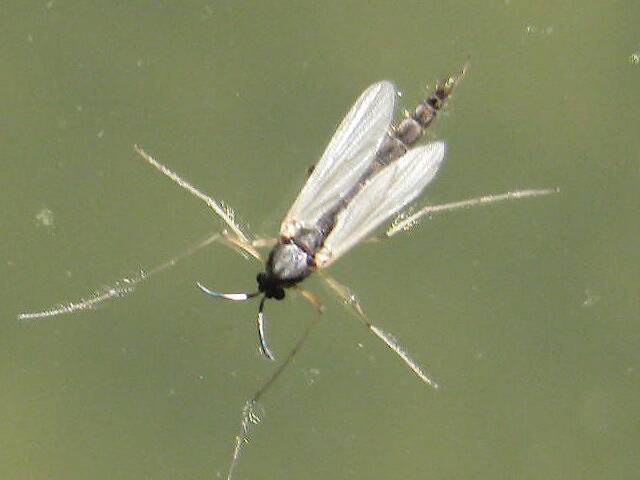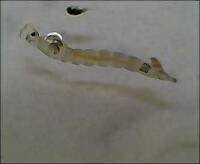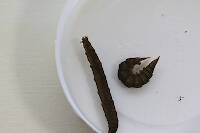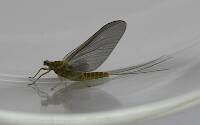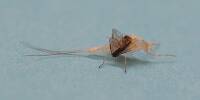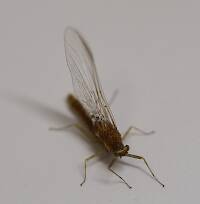
Hex Mayflies
Hexagenia limbata
The famous nocturnal Hex hatch of the Midwest (and a few other lucky locations) stirs to the surface mythically large brown trout that only touch streamers for the rest of the year.
Featured on the forum

This specimen appears to be of the same species as this one collected in the same spot two months earlier. The identification of both is tentative. This one suffered some physical damage before being photographed, too, so the colors aren't totally natural. I was mostly photographing it to test out some new camera setting idea, which worked really well for a couple of closeups.

Troutnut is a project started in 2003 by salmonid ecologist Jason "Troutnut" Neuswanger to help anglers and
fly tyers unabashedly embrace the entomological side of the sport. Learn more about Troutnut or
support the project for an enhanced experience here.
Brian314 on Jul 7, 2019July 7th, 2019, 2:54 am EDT
One summer (years ago) on the Au Sable South Branch (at Truettner's, to be exact) I kept running into these weird-but-beautiful flies - took me forver just to figure out what they were - was wondering if anyone has ever seen a trout take one ??
Falsifly on Jul 8, 2019July 8th, 2019, 2:20 am EDT
Yes I have but they were females ovipositing. The technique required would be dapping. Unfortunately they were laying their eggs under a thick very low hanging willow through which it was impossible to gain access. It was interesting to watch and I gave it some thought but had to move on.
Falsifly
When asked what I just caught that monster on I showed him. He put on his magnifiers and said, "I can't believe they can see that."
When asked what I just caught that monster on I showed him. He put on his magnifiers and said, "I can't believe they can see that."
Troutnut on Jul 11, 2019July 11th, 2019, 3:53 am EDT
The larvae are found more often in still water than running water, although that can include still-water sloughs connected to a river. I wouldn't be surprised if trout take a few, although I've never seen them in numbers that would make a trout selective enough to require an imitation.
Jason Neuswanger, Ph.D.
Troutnut and salmonid ecologist
Troutnut and salmonid ecologist
Jmd123 on Jul 12, 2019July 12th, 2019, 12:38 am EDT
Their larvae like iron seeps - places where Iron-rich groundwater comes to the surface, and makes that funky orange-yellow looking flocculent stuff called "yellowboy" (an iron oxide-hydroxide mixture). Find this, dig around in it, and you will find the larvae, and probably a few adults flying around too. They're cool and pretty!
Jonathon
Jonathon
No matter how big the one you just caught is, there's always a bigger one out there somewhere...
Brian314 on Sep 1, 2019September 1st, 2019, 9:34 pm EDT
Been fishing the HW and the SB a lot - haven't seen one in years - very cool though :-)
Quick Reply
Related Discussions
Topic
Replies
Last Reply
2
Apr 7, 2012
by Crepuscular
by Crepuscular
4
Apr 12, 2014
by Brookyman
by Brookyman


